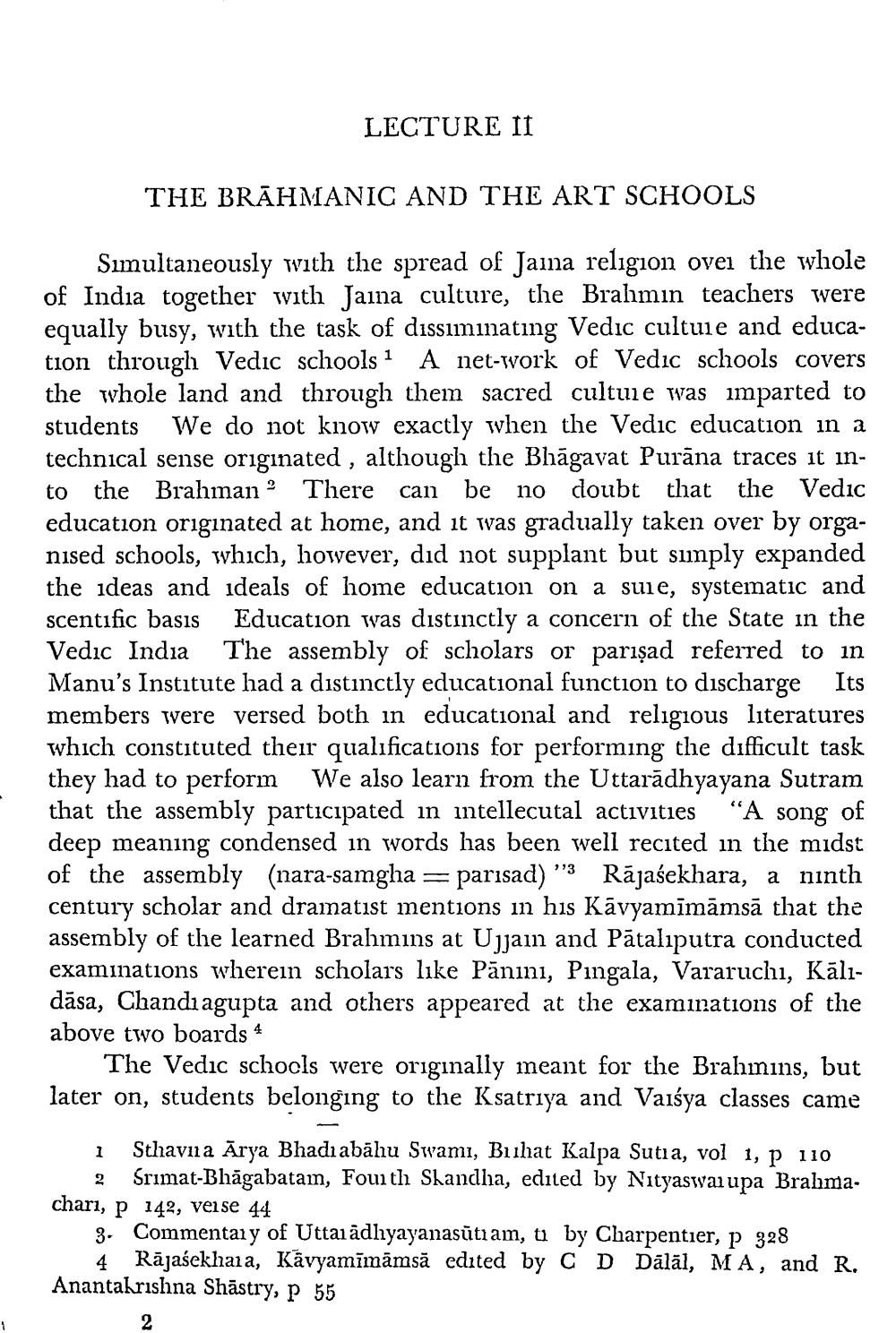________________
1
LECTURE II
THE BRAHMANIC AND THE ART SCHOOLS
Simultaneously with the spread of Jaina religion over the whole of India together with Jaina culture, the Brahmin teachers were equally busy, with the task of dissiminating Vedic culture and education through Vedic schools 1 A net-work of Vedic schools covers the whole land and through them sacred culture was imparted to students We do not know exactly when the Vedic education in a technical sense originated, although the Bhagavat Purāna traces it into the Brahman 2 There can be no doubt that the Vedic education originated at home, and it was gradually taken over by organised schools, which, however, did not supplant but simply expanded the ideas and ideals of home education on a sule, systematic and scentific basis Education was distinctly a concern of the State in the Vedic India The assembly of scholars or parışad referred to in Manu's Institute had a distinctly educational function to discharge Its members were versed both in educational and religious literatures which constituted their qualifications for performing the difficult task they had to perform We also learn from the Uttaradhyayana Sutram that the assembly participated in intellecutal activities "A song of deep meaning condensed in words has been well recited in the midst of the assembly (nara-samgha parisad) Rajasekhara, a ninth century scholar and dramatist mentions in his Kāvyamīmāmsā that the assembly of the learned Brahmins at Ujjain and Pataliputra conducted examinations wherein scholars like Panini, Pingala, Vararuchi, Kālıdāsa, Chandi agupta and others appeared at the examinations of the above two boards *
113
The Vedic schools were originally meant for the Brahmins, but later on, students belonging to the Ksatriya and Vaiśya classes came
1 Sthavna Arya Bhadi abahu Swami, Bihat Kalpa Sutia, vol 1, p 110 Srimat-Bhāgabatam, Fourth Skandha, edited by Nityaswaiupa Brahmacharı, p 142, veise 44
2
3. Commentary of Uttaradhyayanasuti am, ti by Charpentier, p 328 4 Rajasekhaia, Kāvyamīmāmsā edited by C D Dālāl, MA, and R. Anantakrishna Shastry, p 55
2




